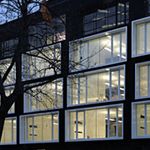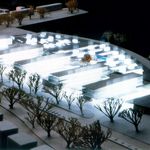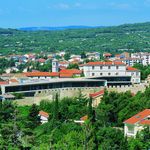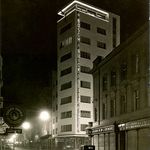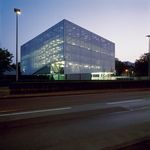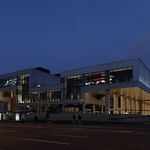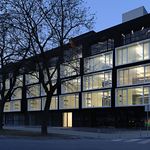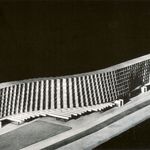Continuity of the Modernism
Continuity of the Modernism, Fragments of Croatian Architecture from Modernity to 2010
RSR | Rotovž Exhibition Salon, Trg Leona Štuklja 2, Maribor
Opening: Thursday, 10 June 2010 at 19:00
Croatian architecture has drawn a certain amount of international attention during the last few years. Despite this interest, Croatian architecture is rather unknown, and its cultural status has just begun to be outlined through new critical interpretations of a peripheral, but pregnant and specific milieu. Exhibition presents 85 works by Croatian architects from the 30ties to today, mainly realised in Zagreb as well as in other Croatian towns and some abroad (Slovenia, BiH, Belgium etc.).
During the 20th century, Croatia was part of five states and three economic-political systems which influenced a permanent instability of social context and incompleteness of the modernization process. During the 1930s, with the strengthening of industrialization, architecture participated in forming a modern urban identity, but also in creating a spatial frame for a more and more powerful bourgeois class. At the same time, it insisted on social involvement because the political position of most architects, mostly with experience of working with the world’s then leading masters – from Loos to Le Corbusier – was progressive and left-leaning. Through the process of urbanization and alliance of high modernism and socialist political project of the 50s and 60s, architecture came into prominence as one of the leading cultural and technical disciplines and an important symbolic representative of the building of a ‘new society’ with the ambition of reaching a utopian horizon. After independence in 1991, the progressive architectural scene succeeded in establishing a critical relation to transition and post-transition circumstances, finding new modus operandi in a deregulated environment and actualizing the experience of modernity in accordance with contemporary tendencies. As a result of the described processes, there is a quite a high density of high-quality architectural realizations on the small territory of Croatia. The shared determinant of these realizations is a modernizing ambition which refers to very different sources: from representation of political power to improvements in social standards. This exhibition displays prominent buildings with the intention of presenting especially creative periods and concepts in Croatia’s fertile architectural scene.
Architects: Juraj Denzler; Juraj Neidhardt; Josip Pičman; Ernest Weissmann; Ivan Zemljak; Foundation Block; Stjepan Planić in Slavko Löwy; Antun Ulrich in Stanko Kliska; Josip Pičman; Nikola Dobrović; Stjepan Planić; Drago Ibler; Frane Cota; Alfred Albini; Ivan Antolić in Zdenko Kolacio; Vladimir Turina; Marijan Haberle; Lovro Perković; Neven Šegvić; Radovan Nikšić in Ninoslav Kučan; Boris Magaš, Edo Šmidihen in Radovan Horvat; Alfred Albini; Vladimir Turina; Kazimir Ostrogović; Ivan Vitić; Rikard Marasović; Julije De Luca, Matija Salaj, Bernardo Bernardi, Ante Rožić, Stanko Fabris, Drago Galić, Branko Raos in Slavko Jelinek, Neven Šegvić, Vjenceslav Richter, Vojin Bakić, Boris Krstulović, Hrvoje Njirić in Helena Paver Njirić; Ante Kuzmanić, Danijel Marasović, Goran Rako, Bojan Radonić; Veljko Oluić in Tonči Žarnić, Hildegard Auf – Franić in Veljko Oluić; Saša Randić, Idis Turato, Fran Krsto; Miljenko Bernfest, 3LHD, Studio UP; Miroslav Geng; Goran Rako, Nenad Ravnić, Josip Sabolić; Davor Bušnja; Robert J. Loher, Petar Mišković, Branimir Rajčić; CAPSULA; Iva Letilović, Morana Vlahović; Ivan Galić, Mario Perossa, Ante Nikša Bilić, Nikola Popić; Dina Ožić-Bašić, Đurđa Vujnović; 2A; Studio BiF, Nenad Fabijanić; Vinko Penezić, Krešimir Rogina; Andrej Uchytil, Renata Waldgoni; Snježana Jakopčić, Andrija Rusan; Nikola Popić, Nikola Bašić, Goran Rako, Andrija Rusan, Igor Franić, Davor Katušić; Branimir Medić, Pero Puljiz with Zdravko Ajduković
The Exhibition is organised by the journal Oris, Assiciation Oris-House of Architecture and Arhitekst in colaboration with UGM / Maribor Art Gallery.
curators: Vera Grimmer, Tadej Glažar, Maroje Mrduljaš, Andrija Rusan
